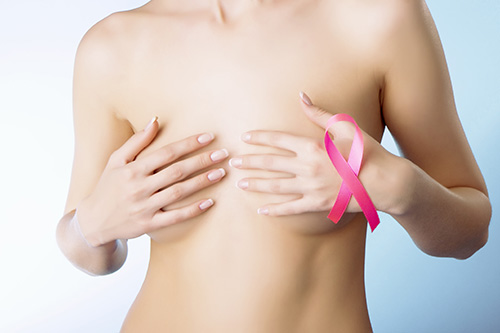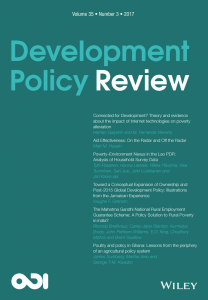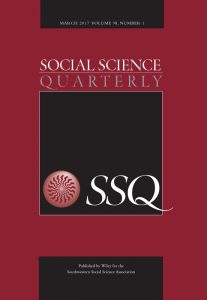Cancer is Not a Pink Ribbon (part 1)
As a belated nod to ‘Breast Cancer Awareness Month’ (October, in the USA), and the plethora of pink, breast-cancer-sponsored items now on sale, I want to talk about the rise of the pink ribbon campaign and the concept of ‘pinkwashing’.
Breast cancer and the pink ribbon campaign is probably one of the biggest success stories, in terms of its ability to raise awareness and ultimately, save lives. Breast cancer activism started in the 1980’s, in part as a reaction to the patriarchal medicalisation of women’s bodies. Up until then, breast cancer was being silenced: the field was dominated by male surgeons with little information available for individual sufferers, and incidence rates were fast increasing. A huge, grass roots movement began, focusing on empowering and giving voice to suffers and their families. By the 1990’s the focus had been shifted away from the medical profession and onto the empowerment of patients, and this increased attention and exposure increased its status and cultural currency. This was furthered by the launch of the now now iconic pink ribbon in 1992.
This increased focus was incredible in its uptake. It allowed the breast cancer movement to become a prominent focus for the general public, ‘awareness’ was raised, huge amounts of funds were raised, and it was being run by women: by cancer survivors, sufferers and family members. Treatment improved, mortality rates declined. It was a success. But, as Gayle Sulik notes: “By this time, there were already controversies over the benefits of mammograms, concerns over conflicts of interest, rising competition in pharmacology, and infighting among thought leaders and scientists. Yet cause promotion and the desire to do something for breast cancer held the public’s attention”.
The shift away from medical procedures and towards the pink ribbon had an additional effect on the disease’s representation. Previously the focus had been on women who actually got the disease, including their scars and imperfections. Post-pink ribbon the media representation of ‘breast cancer awareness’ became pictures of women in their 20s (statistically the least likely to get it) feeling their breasts and taking selfies. Young attractive women reminding you to #checkyourselfie (Geddit? Preventing breast cancer is fun!).
Somewhere in the awareness campaign women who were actually ‘suffering’ with it got lost, replaced with acceptable narratives, tied up with pink bows. When we do see survivors or older women they are within a culture of She-roes, who are “kicking cancer’s ass” while looking feminine, fabulous, and almost oppressively pink. This move from the focus on controlling disease or finding cures, to focusing on how the individual can personally manage and negotiate risk is what is known as biomedicalisation, as Sulik outlined in her 2011 Sociology Compass article: ‘Our Diagnoses, Our Selves’: The Rise of the Technoscientific Illness Identity’. This results in aspect of disease, particularly breast cancer, becoming part of individual identity and associated with consumerism and a sense of self, rather than as something that is dealt with medically.
This is not to say that this is inherently a bad thing. This ‘pinkwashing’ campaign has been successful in the sense that it has made breast cancer easily palatable and easier to discuss, particularly when getting young people talking and raising money. But it gives consumers of pink products a warm fuzzy glow and big companies a way of selling products (often making much more money for themselves than they make for the charity), and has little impact either on detection or survival rates. In its focus on pink bears, handbags, tutus and dresses it makes a mockery of illness, stress, pain, fear, anxiety, nausea, damaged bodies, surgery, organ damage and the loss of lives that the disease can cause.
And even the pinkwashing would be more acceptable if it had actually prevented women contracting or dying from breast cancer. Since the initial improvements in the 1980s, encouraging women to check themselves has not affected the number of diagnoses, nor has it reduced the mortality. The ‘awareness’ campaign has either done all the good it is going to, or it isn’t working, and in the rush to become ‘aware’ of cancer there was little in depth thought into what might actually prevent women dying. Conducting more mammograms has not actually lowered mortality rates, and statistically only increases the chances of having a false positive result (the chances of being falsely diagnosed with cancer over 10 yearly mammograms are about 50 to 60 per cent, while the chances of having a false negative are anywhere between 17 and 30 per cent).
I was a teenager at about the time these campaigns were becoming mainstream, but they didn’t make me aware of cancer. I ‘became aware’ of breast cancer when my mum got diagnosed. Because her last mammogram had been clear they concluded it must be fast growing, and they operated a week later, doing a full one-sided mastectomy. It wasn’t until afterwards they discovered it had been a benign lump, and had been missed on the previous scan. Was she ‘better safe than sorry’? Some are, and will be, but the potential danger and negative effects of these errors, in my mum’s case, resulted in a heavy duty surgery that she did not need.
I will talk more in my next post about my mum’s experience of going through this (and in particular of being the only woman I know who has not had a breast reconstruction or who wears a prosthesis), but I can tell you one thing: cancer is not a pink ribbon. It is not feminine or girly, or fun. It doesn’t make she-roes. I’m not going to kick its ass and I am definitely not comforted by a fracking company making pink drill bits in her honour, in the name of ‘promoting awareness’ for a disease that affects 1 in 8 of women in the UK. It is messy, painful, invasive, emotionally difficult and life threatening. So please, forgive me if I don’t wear a ribbon to show how aware I am.
Other articles
http://philanthropy.com/article/3-Questions-We-Need-to-Answer/149299/





1099-0860/asset/NCB_logo.gif?v=1&s=40edfd0d901b2daf894ae7a3b2371eabd628edef)
This made me think back a couple of months, when there were posters across my city (and no doubt other UK cities) for a “march on cancer”. It is difficult to criticise an attempt to raise charitable funds to improve the health of humankind, but I just cringed when I saw the signs. Because it was a totally false appropriation of the imagery of political dissent. Can you imagine if Martin Luther King, or indeed anyone who has organised / participated in a public protest on an issue they really cared about, dropped by?
“Hey guys, what are you marching about?”
“Cancer”
“Oh, that’s great. Show them we won’t stand for the socioeconomic and racial disparities in treatment, funding, research, and outcomes”
“Nah, we’re just marching against cancer cos it’s a bad thing. We’re not rocking the boat. Do you want a balloon mate?”
Those mutating cells would clearly think twice after seeing such resolve from the public.
As it happened, I was in the city centre the night of the “march”. A human snake, with participants of all ages, carrying faux-homemade placards, wended its way around the city centre. There were some sort of stickers on the pavement along the route, with names of cancers on, but without the word ‘cancer’ itself. (The stickers with “breast” and “testicular” probably starred in a few irreverent selfies later that Friday night (I didn’t see if they’d remembered to include “penile”). Leukaemia and mesothelioma, not so much. The “brain” stickers probably looked like a marketing campaign for the local brewery that had missed out a letter). There were marshals, strategically placed, exhorting their charges to shout slogans. It appeared, from some of the banners and slogans, that quite a few people were cancer patients, or former patients, themselves. So for them, it was probably great to have that feeling of solidarity with fellow sufferers and carers. But there was still no need to pretend that it was some sort of protest.
My other problem with this event was that, predictably, it anthropomorphised the disease. “Show cancer who’s boss”. “Stand up to cancer”, etc etc. Of course, people’s state of mind probably does affect (a) the efficacy of some treatments, and (b) their quality of life whilst suffering from the disease. But ultimately, cancer is a disease. It is a process that happens within our bodies and over which we have little control. Someone very close to me was recently diagnosed with cancer. Happily, it was not an aggressive (see, I slip into anthropomorphic language too) tumour, and it appears to have been treated successfully. So under the logic of the March on Cancer, this person was a hero. He defeated his cancer. But what if treatment had not been successful? Would that have been some personal failing on his part? Of course not. It would have been awful, tragic, a waste for someone who had so much left to live for. But he’s not a hero for having (apparently – you never really know for sure) responded well to treatment. And he would not have been a failure if things had been different.